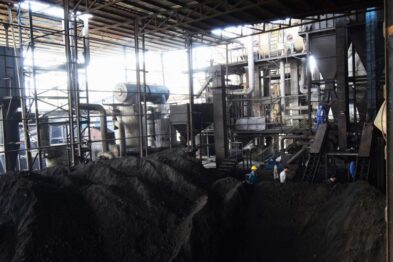By Tom Bearpark, Ashwin Rode and Archana Patankar
Context
Unmanaged rainfall is an escalating public health threat for cities worldwide. Nearly 1.8 billion people live in flood-prone areas. This number is rising rapidly as urbanization expands into risky zones and climate change intensifies rainfall. In many parts of the Global South, drainage, sanitation, and waste systems have not kept pace. This has been turning heavy rain into hazards that cause both immediate deaths and longer-term disease outbreaks. Future sea level rise will further amplify flooding hazards making rainwater and urban flood management a defining challenge of 21st century public health, economic development, and urban planning policy.
Research Design
The researchers provide the first population-wide estimates of the impact of rainfall on mortality in one of the world’s largest cities—Mumbai, India. They combine individual death records with highly-localized rainfall data to estimate the effects by age, gender, and slum residence. They also study the co-occurrence of rainfall and high tides to evaluate how future sea level rise may exacerbate the mortality impacts of rainfall.
The mortality data came from the Municipal Corporation of Greater Mumbai’s (MCGM) death registration system for 2006–2015, covering every recorded death in the city. Each death was mapped to one of 89 postal zones and classified as from a slum or non-slum area. Rainfall data were drawn from MCGM’s Automatic Weather Station network, which measures precipitation every 15 minutes, and tide heights from US National Oceanic and Atmospheric Administration tide tables. Because Mumbai’s monsoon rains fall in localized bursts, this random variation enabled the team to estimate the causal impact of rainfall on deaths over five weeks, capturing both immediate and delayed effects.
Findings
Rainfall accounts for about 8 percent of deaths, comparable with cancer.
Heavy rainfall has a clear and lasting effect on deaths in Mumbai. The study found a single day with 150 millimeters of rain raises the risk of death over the following five weeks by 2.2 percent compared to a dry day. All total, this rain caused about 7-8 percent of the city’s deaths during the monsoon season—representing about 2,300 to 2,700 lives lost in each season during the 2006 to 2015 period. That’s comparable with the city’s deaths from all cancers over the same time span. Deaths arise both immediately during rainfall events—such as from drowning, electrocution, and traffic incidents—and after, as floods trigger diseases such as dengue, diarrhea, and malaria. The results imply that increased deaths from rainfall and flooding in Mumbai cost the city about US $1.2 billion per year in life years lost. This does not count costs to the city not associated with deaths, such as broader health and welfare, infrastructure, lost labor time, etc.
Rainfall’s impact on deaths is highly unequal, with 85 percent of the death being poor people. Children and women also face a higher toll.
The health impacts of rainfall are far more severe for people living in slums than for those in other parts of the city—with slum residents accounting for 85 percent of the deaths from heavy rainfall. A day with rainfall of 150 millimeters increases their risk of death by 2.9 percent over the following five weeks (compared to 1.2 percent for those in non-slum areas)—accounting for 11 percent of deaths for poor people during the monsoon compared to 2.4 percent for richer people. These gaps reflect deep inequalities in housing quality, sanitation, and drainage infrastructure, underscoring the need for targeted climate adaptation in vulnerable neighborhoods.
Children under five are also more vulnerable to the impacts of rainfall, with a day with rainfall of 150 millimeters increasing their risk of death over the following five weeks by 5.3 percent (compared to 1.6 percent for 5-64 year-olds and 2.3 percent for those over 65)—accounting for 18 percent of deaths for children under 5 during the monsoon season. The heightened risk for children reflects their vulnerability to waterborne diseases like diarrhea that spread after floods. Women are also more at risk. A day with rainfall of 150 millimeters increases their risk of death by 3.1 percent (compared to 1.5 percent for men). This disparity may stem from both physiological vulnerabilities and social factors, such as unequal access to care and resources during weather-related disruptions.
Intense bursts of rain, and especially intense bursts combined with high tides are the deadliest.
Short, intense bursts of rain lead to more deaths. A single hour of 30 millimeters of rain increases risk of death over the following five weeks by 0.6 percent. If that same 30 millimeters of rain per hour persists for five hours, the risk of death over the following five weeks increases by 3 percent. If instead, the rain falls at 10 millimeters per hour over 15 hours—less intense rain over a longer period of time—the risk increases by 2 percent. Further, the study finds that low-elevation areas experience more deaths from rain than high elevation areas. This is largely due to inadequate drainage, causing more flooding.
The impact of poor drainage is amplified during high tides, when floodwaters linger longer. An hour of 30 millimeters of rain during high tides increases deaths over five weeks by nearly 1 percent, while the same level of rainfall during low tide has very little impact on mortality (0.12 percent). This highlights how future sea-level rise could further amplify these impacts without adaptive infrastructure.
Rising seas will amplify rainfall-driven deaths, with deaths from rainfall increasing by as much as 20% over the coming decades if steps aren’t taken to adapt.
Using tide data, the study simulates future impacts from a combination of heavy rain and rising seas. A 5-centimeter increase in sea level by 2030 would increase deaths from rainfall by about 7 percent—making up about 9 percent of deaths. A 15-centimeter increase would raise deaths by 21 percent—or about 10 percent of deaths. But if no efforts are taken to adapt to rising seas and there is a 40-centimeter increase over the coming century, this would drive a 56 percent increase in deaths from rainfall. This underscores the need for coordinated and far-sighted adaptation investment.
Closing Take-Away
Rainfall is leading to more deaths in Mumbai, India, with vulnerable groups such as the poor, young children and women experiencing the greatest impacts. Deaths increase from heavy bursts of rainfall, especially when combined with high tides. These insights from Mumbai offer valuable lessons for other coastal megacities given that climate change is projected to lead to intensified rainfall in many parts of the world and rising sea levels. As coastal megacities continue to urbanize, adapting infrastructure—such as water, sanitation, waste management and built and natural drainage systems—will be key to saving lives and reducing inequality in the face of a changing climate.














